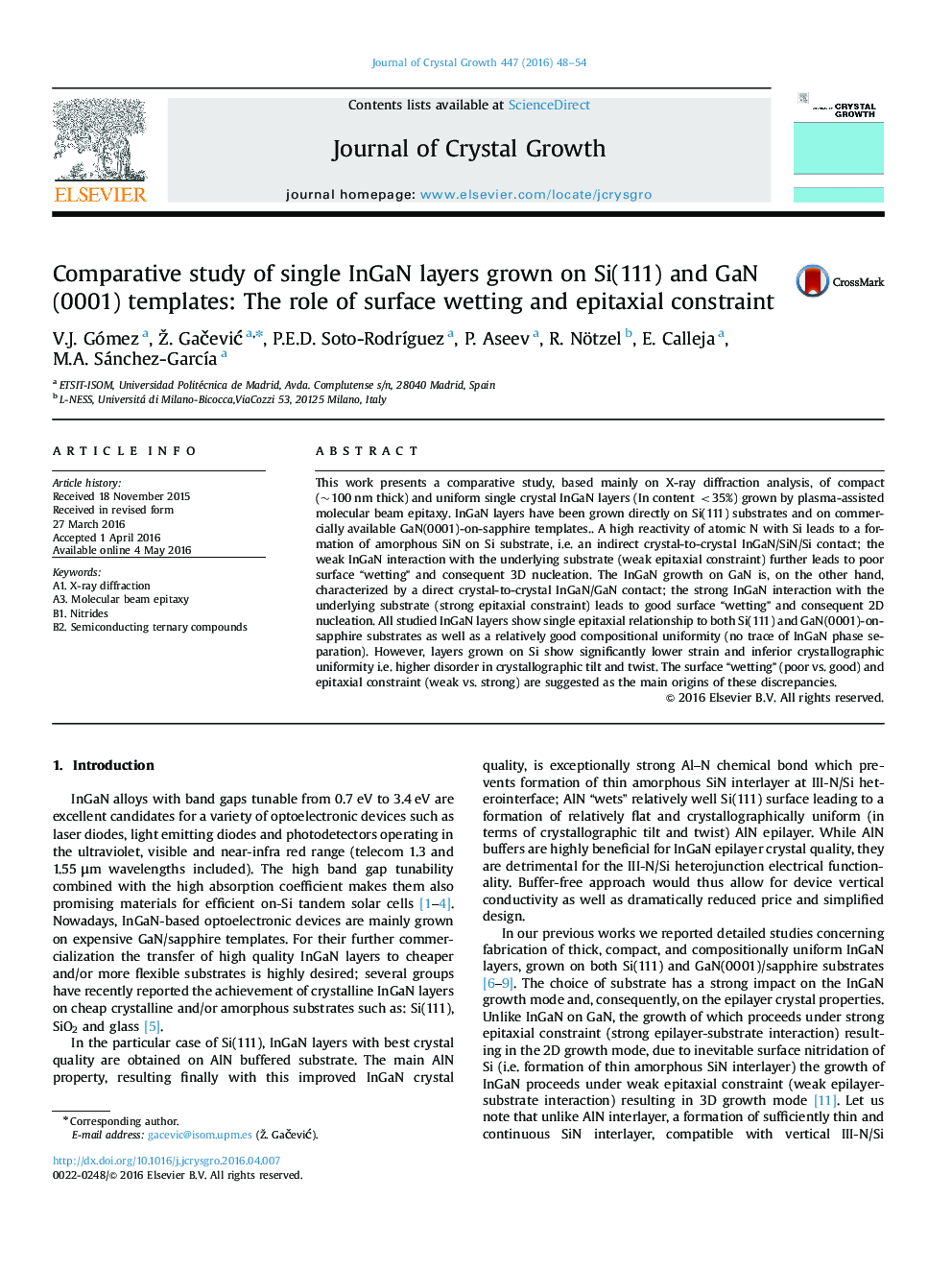| Article ID | Journal | Published Year | Pages | File Type |
|---|---|---|---|---|
| 1789557 | Journal of Crystal Growth | 2016 | 7 Pages |
•Two crucial differences related to InGaN-Si/GaN interfaces are identified.•XRD techniques employed give a valuable insight into crystallographic properties.•Techniques employed are cheaper and faster than TEM analysis.•Techniques employed are non-destructive.
This work presents a comparative study, based mainly on X-ray diffraction analysis, of compact (~100 nm thick) and uniform single crystal InGaN layers (In content <35%) grown by plasma-assisted molecular beam epitaxy. InGaN layers have been grown directly on Si(111) substrates and on commercially available GaN(0001)-on-sapphire templates.. A high reactivity of atomic N with Si leads to a formation of amorphous SiN on Si substrate, i.e. an indirect crystal-to-crystal InGaN/SiN/Si contact; the weak InGaN interaction with the underlying substrate (weak epitaxial constraint) further leads to poor surface “wetting” and consequent 3D nucleation. The InGaN growth on GaN is, on the other hand, characterized by a direct crystal-to-crystal InGaN/GaN contact; the strong InGaN interaction with the underlying substrate (strong epitaxial constraint) leads to good surface “wetting” and consequent 2D nucleation. All studied InGaN layers show single epitaxial relationship to both Si(111) and GaN(0001)-on-sapphire substrates as well as a relatively good compositional uniformity (no trace of InGaN phase separation). However, layers grown on Si show significantly lower strain and inferior crystallographic uniformity i.e. higher disorder in crystallographic tilt and twist. The surface “wetting” (poor vs. good) and epitaxial constraint (weak vs. strong) are suggested as the main origins of these discrepancies.
